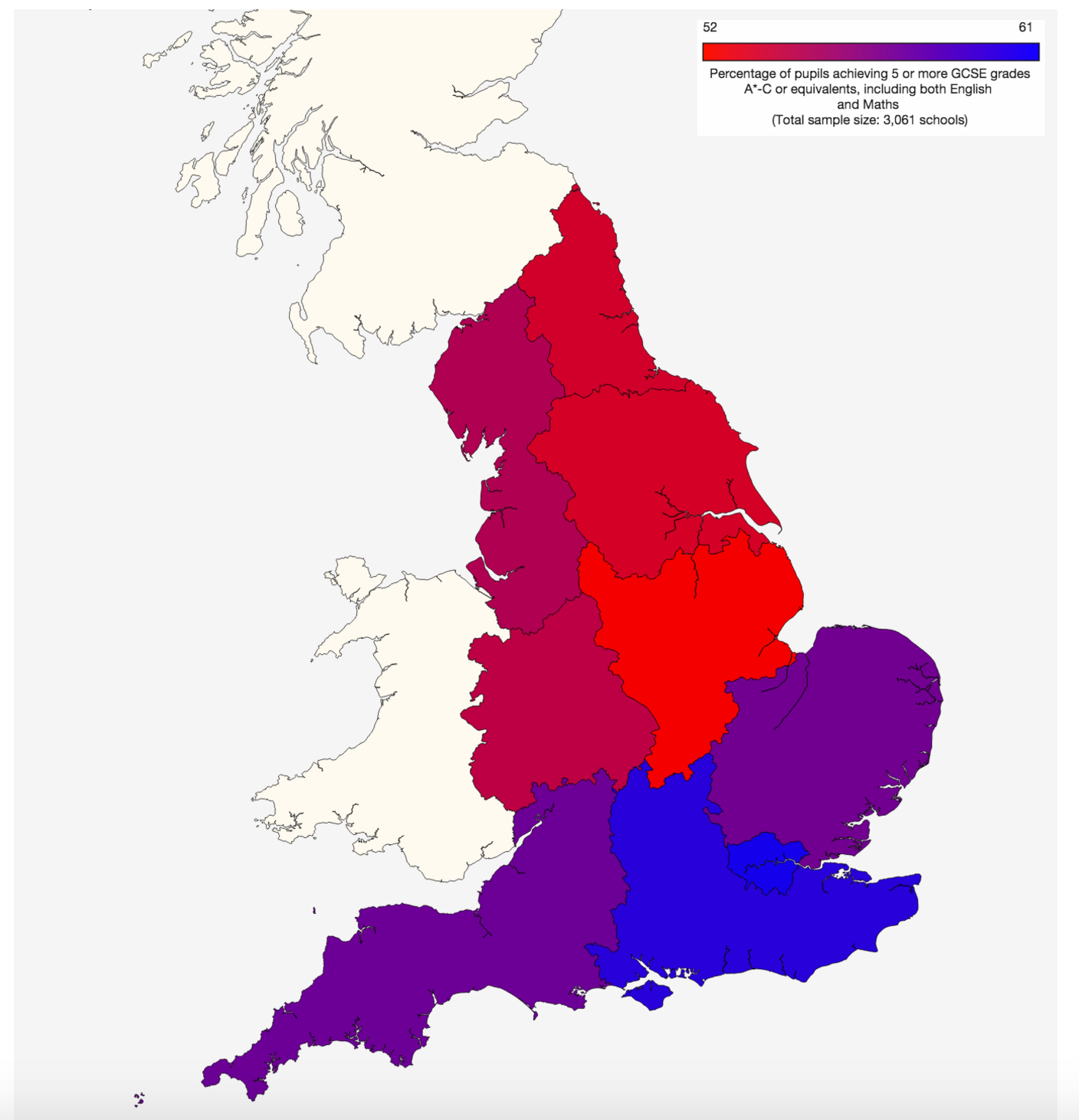North-south divide mapped in GCSE results
- Published

2015 GCSE results: The areas in blue and purple have better results
This year's GCSE results in England show few signs of a north-south divide getting any narrower.
SchoolDash, an education data firm, has mapped the provisional results from this summer's exams, external.
It shows 4.7 percentage points more pupils in the south achieve five good GCSEs including English and maths.
Last week Education Secretary Nicky Morgan said it was a "sad truth" that many underperforming authorities were in the north of England.
There have been warnings from Ofsted about geographical divides in school achievement, with much attention being focused on weak exam results in coastal schools.
Changing patterns
But the analysis of provisional results, put out early for the first time this year, shows the north-south gap, based on a line roughly drawn between the Severn estuary and the Wash.
According to SchoolDash, this line splits England into 3.7 million pupils in mainstream state schools in the North and about 4 million in the South.
And this year, the gap in achieving the benchmark of five good GCSEs, including English and maths, is 4.7% in provisional GCSE results, compared with 4.8% in the final results for 2014. In 2013, the gap was 2.8% and 1.8% the previous year.

2013 GCSE results: Stronger results were concentrated in London and the South East
The results breakdown suggests that London has been consistently the top achiever, with the South West and East Anglia improving.
But the analysis also shows that the gap at GCSE level is not consistent with primary school tests or A-levels.
The gap in national tests at the end of primary schools has been much narrower - with the most recent results showing a 1.1% difference.
The analysis suggests that once deprivation is taken into account, northern primary schools could be seen as more effective than their southern counterparts - with the exception of London which combines both high levels of deprivation and high results.
SchoolDash founder Timo Hannay says the overview shows that regional performance up to the age of seven "correlates closely with deprivation except in London, which does unusually well".
Up to the age of 11, "northern schools tend to make better progress but once those kids go to secondary school their average performance falls well behind their compatriots in the south".
- Published2 November 2015
- Published3 November 2015
